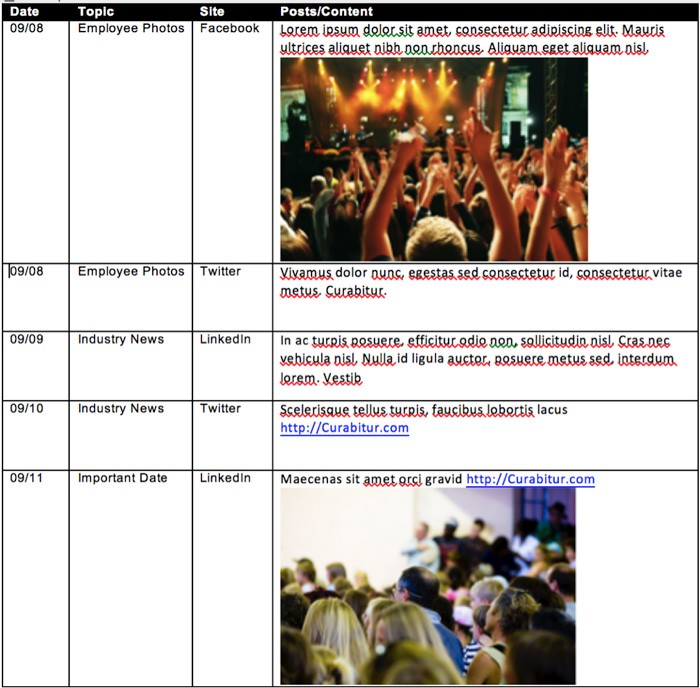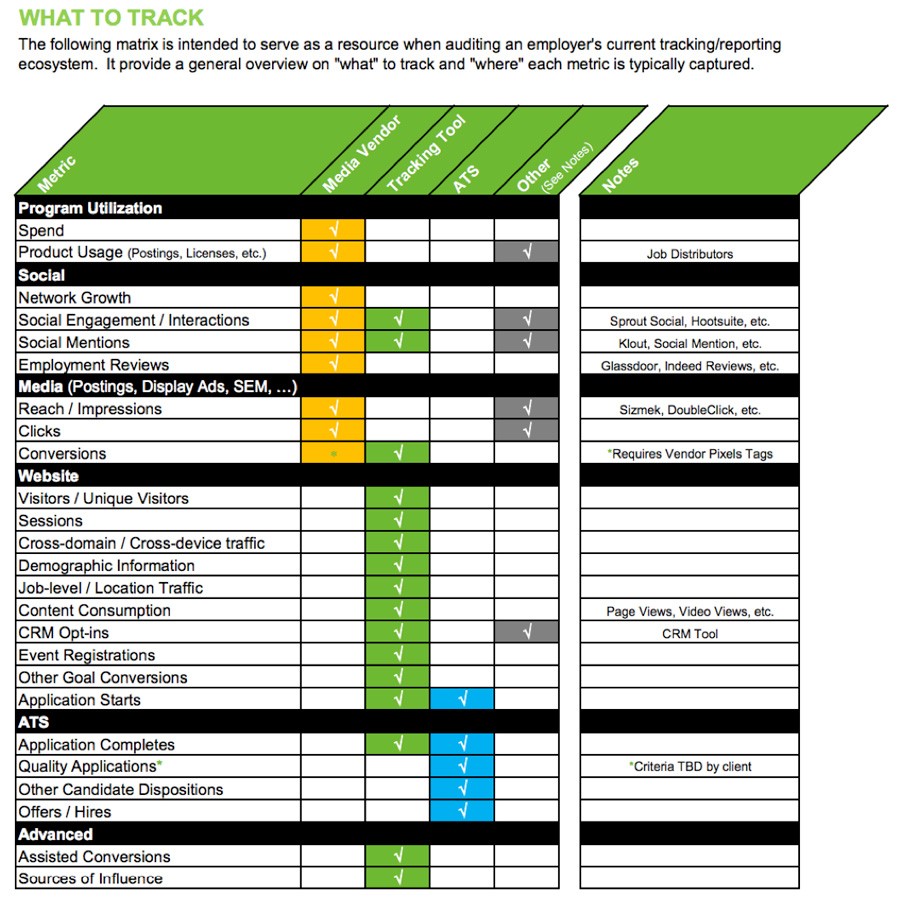6 Tactical Tips for an Effective Social Media Recruitment Plan
Say you’re shopping for a car. Do you buy the first car you see in a lot? Probably not. What you do is go online, do some research, read reviews and maybe even check out your social networks to see if you know someone who’s already an owner.
In other words, before you make that big purchase, there are many “touch points” that need to occur. And it’s the same for candidates – they also require a lot of touch points before they consider applying to your company, said KRT Marketing's Adriana Kevill and Michelle Sargent during a breakout session at Talent Connect.
To make those touch points happen, you need to treat candidates like consumers. You need to sell the job and your company to them. And, you do this by engaging candidates through recruitment marketing on your social media platforms and keeping them interested in what you'd doing so that they'll want to come along for the ride.
Below are six tactical tips shared by Kevill and Sargent for a successful social media recruitment program:
1. Ask a lot of questions to build the right social strategy for your company
Asking a lot of questions is key to launching and cultivating an effective social media strategy. You need these answers to learn what it is that you want to solve with your social media plan.
What kind of questions should you be asking? Kevill and Sargent suggested questions like:
- Why do you want to get into a social program? Do you want to create brand awareness? Do you want a social recruitment program because your competitors are doing it? Or is it because your competitors aren’t doing it? Whatever the reason, define your “why.”
- Who is currently involved with social media activities in the organization? (marketing? recruitment? execs? legal/compliance?)
- Upon creation of new social channels, will others be posting on these accounts accounts? Who will be responsible for responding and engaging?
- Process for reviewing content? Escalation process?
- What social media guidelines have been defined for employee interactions on the social web?
- What is the ideal “tone” or persona that you would like to have in recruitment social media? (e.g. Formal professional, Informal friend, Humorous, Sarcastic, etc). Find examples of posts that use this ideal tone.
2. Use your own talent to create your social media dream team
Look at who’s around you to create your team. Gather young people in the office, identify their favorite social media channels and ask them what kind of information they share on their networks, advised Sargent. After all, your employees’ social networks are 10x bigger than your company’s followers. Use that to your advantage and turn your employees into brand ambassadors.
Think: only 2% of employees are helping to build their companies’ brands through social media and content marketing, yet those 2% are responsible for 20% of the company’s overall social engagement (Read more about how you can turn employees into brand ambassadors here).
3. Keep a very close eye on competitors
What are other companies doing out there? What are your competitors doing? Below are some questions you should ask (and answer) yourself when checking out the competition:
- What tools are currently being used? (e.g. Monitoring, measurement)
- What topics or conversations are currently being monitored?
- Are there identified sites or key influencers that you follow?
- Who should you monitor for comparison and opportunity?
- What employment brands do you respect or would like to emulate?
- Describe what the approach has been up until this point.
Now with those questions in mind, check out review sites and reports to see how you stack up against others in the industry. LinkedIn has a Talent Pool Report that helps you benchmark where you are compared to the competition and Social Recruitment Monitor measures your performance against other employers. This tool aggregates only career-related social channels—Facebook, Twitter, YouTube—and is a great way to see how your channels fare against others in the industry, advised Kevill and Sargent.
Next, check out what others are saying about you in review boards and respond to these reviews as often as possible, making sure to respond to both the positive and negative ones, said Kevill. This will allow you to give your side of the story and also communicate to prospective candidates that you’re constantly trying to improve.
Lastly, set up an RSS feed or Google alert to industry blogs and follow business leaders so you can stay up-to-date on trends. When you see an interesting post, consider putting a career twist on it for your own content.
4. Have two-way conversations with your audience
Once you’ve done your homework and come up with a strategy, it’s time to create your content. After you post something, don’t run away! Engage with readers and the audience.
Take a look at all of the companies today that have career pages. Take a closer look at how the audience is responding. Here are some things to keep in mind during the process, suggested Kevill and Sargent:
- Always keep content interesting and flowing. Boring content is the number one reason people stop following brands. Always ask yourself, why would people like, comment and share a piece of content?
- 60% of the content you’re putting out should not be about you or your company. It should be content that you audience really craves. That could be something like “interviewing tips” or “how to make a great first impression.” About 30% of your content should be about culture and employer brand and 10% should focus on career opportunities.
Below are some good topics to consider for your new social media recruitment plan (read more in KRT Marketing’s Recruitment Social Media Discovery Document here).
- Events—Are there any corporate or recruiting events coming up that you want to share?
- Employee profiles—Who might you consider profiling? What kind of image of the company should employee profiles convey?
- Community service—Is there any upcoming community service work that is worth promoting?
- Projects—Any cool upcoming projects that are worth promoting?
- Awards and recognition—Any upcoming awards that you want to highlight? Consider Best Places to Work recognitions, especially.
- Benefits like employee ownership, professional development, mentoring, work-life balance are excellent topics to highlight.
- Photos and videos—“A Day in the Life of” or life outside of work videos and photos of your employees can do well on social media.
5. Plan, plan, plan for the future
Your content should be organized into categories (ex. career opportunities, hiring, benefits, hashtags). This makes it easier to see what will go live ahead of time. Additionally, planning ahead ensures that even when life gets busy, you still have content ready for publication.
Here’s an example of a social content calendar template that KRT Marketing provided:
6. Track everything you do
Put everything in a dashboard. Track what you’re putting up. At a bare minimum, measure your network growth and followers. This is the only way you’ll be able to improve, know what’s working, understand what your audience wants and hence, grow your network and followers. What else should you be tracking? Here are some suggestions:
Today, candidates should be treated like VIP customers, since in an ideal world, candidates are customers and the same can be said vice-versa. Hence, recruiters need to think like social media gurus and woo their best candidates.
“It’s no longer a linear process where you launch a job post and you get resumes,” said Kevill. “Instead, you need to create a pool and you need to have touch points with that pool, meaning a lot of engagements are needed in order for them to have your company top of mind.”
The more engagements your candidate has with your company, the more likely they’ll choose you over a competitor the next time you’re both vying for their attention.
To receive blog posts like this one straight in your inbox, subscribe to the blog newsletter.
Topics: Recruiting strategy
Related articles






